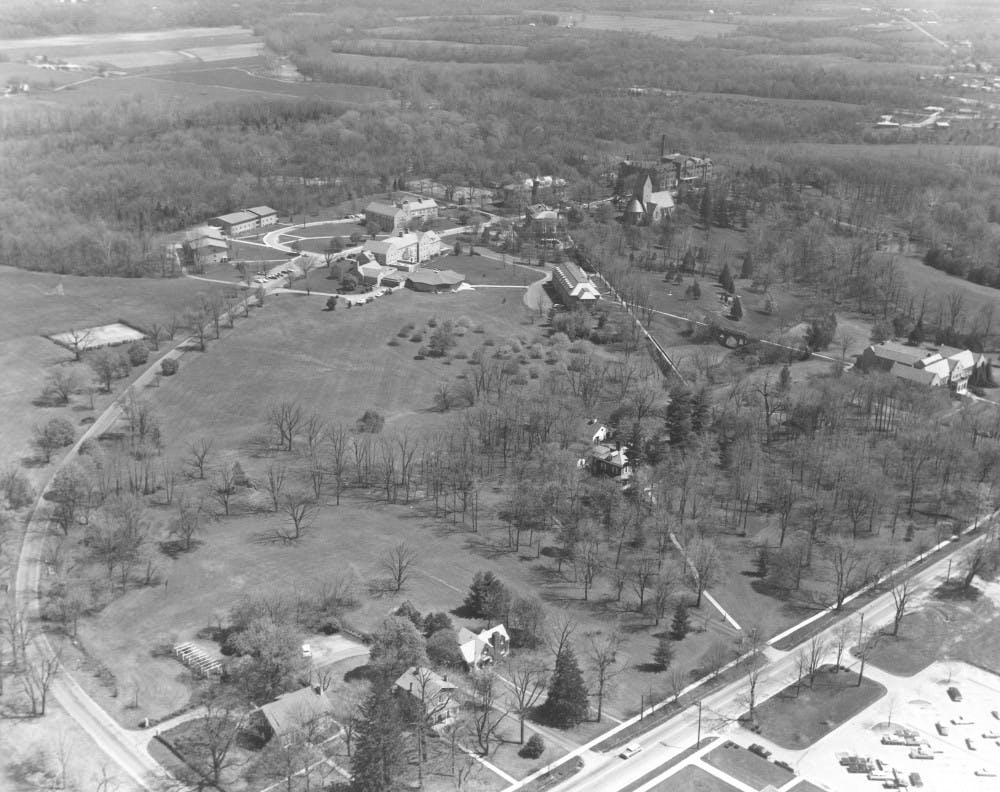By Abbey Gingras, News Editor
When senior Garrett Gust has free time between his classes in Peabody Hall, his favorite place to go is the quiet gazebo by Western Pond.
Some of Mackenzie Rice's fondest memories at Miami are from leisurely strolls on Western Campus with her father.
Soon, these peaceful moments and tucked away spots on Western may disappear, as the university contemplates further construction projects on the former women's college.
Looking to the future - across Patterson Avenue
In searching for further solutions to the current housing shortage on campus, the university Board of Trustees sees more opportunity on Western campus for new construction.
In proposed plans, the board aims to renovate Clawson Hall and add on an extension which will include more living space.
Also recommended is the destruction of both Mary Lyon and Thompson halls, and McKee Hall ceasing use as a residence hall.
David Creamer, Senior Vice President of Finance and Business Services, argued that the potential projects are necessary to the university's future.
Enjoy what you're reading?
Signup for our newsletter
"We did an assessment several years ago looking at which structures would be more appropriate to retain and which would be overly costly in terms of renovations," Creamer said. "We have to consider what's most affordable. Almost everything can be renovated, but the cost can be pretty prohibitive."
The proposed plan for renovating both Clawson Hall on Western and Hamilton Hall on Central Quad is estimated to cost $48 million. If the plan is approved by the Board of Trustees, which Creamer said would likely occur between December and February, construction is projected to begin at the end of the 2015-2016 school year.
Whether these proposals are passed or not, definitive plans are in the works for the future of Western Campus. Among them, an end to the use of the coal plant for energy by the year 2024 and a new monument to Western College and its history.
While Patterson Place was saved from demolition last spring after community outcry, its days may still be numbered. The Western College Alumnae Association only has the building until they are absorbed by Miami in 2024- when Western's last graduating class celebrates its 50th anniversary.
Although change is unavoidable, some like Western the way it is, and perhaps will always remember it for the way it used to be.
Ahead of the times
Western remained a private institution, exclusively for women until men were admitted in 1972. Then it briefly became known as The Western College, until it merged with Miami in 1974.
During its existence as a separate entity from Miami, Western was ahead of its time in more ways than one. The school placed a large focus on both attracting international students and encouraging students to go abroad.
In the 1950s, students from The Western College for Women were touring Africa, the Middle East, Latin America and Asia. In 1960, women from the college visiting the Middle East met with King Hussein of Jordan
Forward thinking continued at Western during the 1960s, at which time Western received national attention for hosting volunteers of the civil rights movement during what would later be known as Freedom Summer in 1964.
Throughout its history, Western's buildings and architecture were designed with the flow of the land. Rather than being laid out in grids or quads, as with many universities, Western's facilities were oriented around the hills, ponds and streams of the campus.
Much of this history remains unknown to Miami students, many of whom never step foot on Western Campus during their time in Oxford.
Miamians respond to change
 [/media-credit]
[/media-credit]Those close to that side of campus have mixed feelings about the changing landscape of the campus that has defined their time at Miami.
Hays Cummins, a professor in the Western Program who has been at Miami since the late 1980s, said he is frustrated by some of the alterations.
"My first thoughts were not very positive, but that could be for a lot of emotional reasons and connections with the way it has always been," Cummins said. "However, the more people that can be on Western campus, the better, because it's a gorgeous part of Miami University."
Kevin Armitage, associate professor in the Western Program with Cummins, also looked at some of the positives of change.
"I do think the university is being much more conscious to integrate this part of campus with the rest of Miami," Armitage said.
This integration includes the three new dorms that opened last fall, which have brought more students than ever to live on Western.
Mackenzie Rice, Director of the Western College Alumnae Association, attended Miami and now works on campus- frequently in Patterson Place. While she accepts that change must happen, she also knows that many people are frustrated by them.
"The [Western] alumnae are very conscientious of the fact that probably not all the buildings will stay, but I think they would like to see as many buildings as possible stay because they really tell the story of Western," Rice said.
The rest of Miami's campus has not been immune to alterations; many of the 47 residence halls have undergone some sort of renovation as the university attempts to upgrade living and academic facilities.
But Miami's oldest buildings and unique history are as important to its allure as new construction. Gust won't walk down Western College Drive. Instead, he chooses to take the scenic route.
"I walk through [Western] right by Patterson Place," Gust said. "To me, that is the Robert Frost quote about Miami. He was talking about that walk- that is the quintessential college campus."
[media-credit id=6407 align="alignleft" width="2050"] [/media-credit]
[/media-credit]




